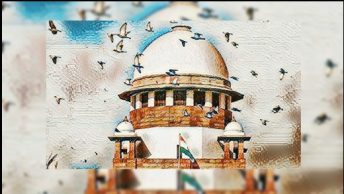In this article, I argue that the Indian state uses its relationship with people who it describes as ‘overseas Indians’ to support particular policies being pursued in the name of India’s ‘development’. These two concepts – overseas Indians and development – are often taken for granted. However, these concepts are constructed in particular ways, as I show by analysing the discourse emerging from an influential Indian government report – the 2001 report of the High Level Committee on the Indian Diaspora (‘HLC Report’). Invoking Indians who are abroad to shape the governance of Indians inside of India appears, at first, to be counterintuitive. So, for many readers, the most surprising aspect of this article will be my claim that overseas Indians are being used to ground the authority of the Indian state to pursue particular development policies.
The way in which the High Level Committee on the Indian Diaspora (‘HLC’) tells a particular kind of story is central to my argument. The HLC tells a story of heroic overseas Indians, who have faced discrimination and hardship abroad, but have nonetheless become economically successful. Now, their desire to contribute towards development in India is being thwarted by India’s inadequate regulatory environment. There can be little doubt about economic success achieved by many overseas Indians, or the difficulties confronting them, but my goal is not to interrogate the accuracy of the HLC’s story. Rather, my point is that the way that the HLC tells its story does particular work.
Putting a heroic character alongside a defective character helps make the hero’s knowledge appear to be authoritative. India appears in the HLC’s story as an exemplary character, but the HLC nonetheless constantly underlines India’s (apparent) need for a particular kind of development. That is, India is an exemplary character, with one important defect. Putting this ‘underdeveloped’ India alongside the heroic overseas Indian helps make the hero’s ‘knowledge’ authoritative. So, when the HLC reveals that (heroic) overseas Indians are trying to help India develop, but that the laws of a (defective) India are preventing them from doing so, it does not seem sensible to ask whether overseas Indians should change the ways in which they are trying to help India. Rather, it seems much more sensible to ask how India can make the changes that are (apparently) necessary.
The HLC uses this story, in conjunction with claims about the ‘demands and expectations of overseas Indians’, to make its recommendations. Some of these recommendations directly concern overseas Indians, including recommendations facilitating investment in India by overseas Indians. Other recommendations extend well beyond the Indian state’s relationship with overseas Indians, and involve overhauling the entire business environment inside of India, such as a recommendation to reduce corporate tax rates within India. These recommendations envisage a particular kind of development in India.
The HLC relies on the (apparently) authoritative knowledge of overseas Indians to help shape this version of India’s development. However, it is not obvious what this knowledge is – and the HLC helps produce it, by ‘describing’ the ‘demands and expectations of overseas Indians’. In so doing, the HLC chooses both who counts as an ‘overseas Indian’ and whose ‘demands and expectations’ count as worthy of description. Particular notions of ‘overseas Indians’ and ‘development’ are being shaped simultaneously, and India’s development policies are being shaped through a report about overseas Indians.
I am not suggesting that India’s development project is being shaped exclusively through recommendations made in one Indian government report about overseas Indians. Far from it. The development project’s contested nature means that it is constantly being constructed and reconstructed, and that new sources of authorisation are always being sought. Recognising the ways in which this is happening, and the assumptions on which such recommendations are being made, offers one route to challenge the implementation of these policies.
Recognising how these recommendations are being made also offers a way in which to better understand the laws that result from their implementation. Stories help give law meaning, and uncovering these stories is an important step towards better understanding law. The HLC Report led to far-reaching changes in India’s governance of overseas Indians, including through the creation of the Ministry of Overseas Indian Affairs, a body whose work now continues within the Ministry of External Affairs. This work is built on a particular kind of connection between overseas Indians and India’s development project, work that can be better understood through an interrogation of the story told by the HLC.






Thanks for sharing. I read many of your blog posts, cool, your blog is very good.